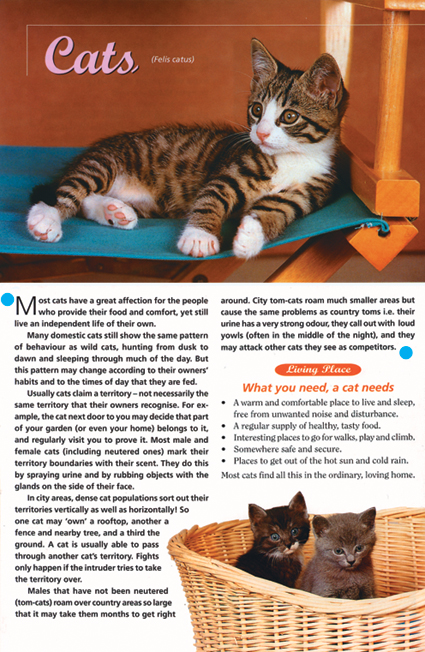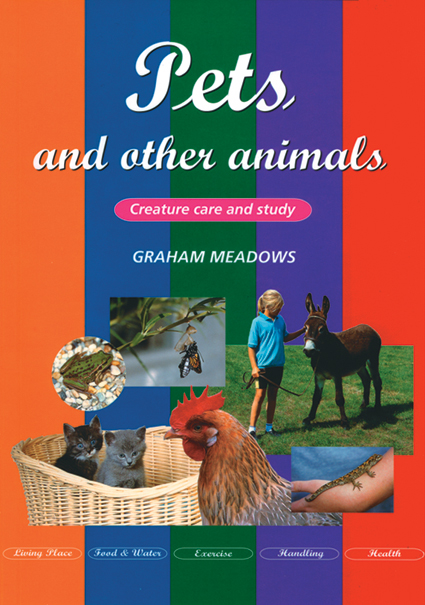|
|
:
Trend Task:
Reading Record – Non-Fiction |
|
| BAND 3 | |
| Pets
and Other Animals, by Graham Meadows (author & photo)
Bridge Hill, NZ: 1999. |
|
| Introduction:
This passage of reading is called Cats. It is about the habits and needs of domestic cats. |
|
Text: Most cats have a great affection for the people who provide their food and comfort, yet still live an independent life of their own. Many domestic cats still show the same pattern of behaviour as wild cats, hunting from dusk to dawn and sleeping through much of the day. But this pattern may change according to their owners’ habits and to the times of day that they are fed. Usually cats claim a territory – not necessarily the same territory that their owners recognise. For example, the cat next door to you may decide that part of your garden (or even your home) belongs to it, and regularly visit you to prove it. Most male and female cats (including neutered ones) mark their territory boundaries with their scent. They do this by spraying urine and by rubbing objects with the glands on the side of their face. In city areas, dense cat populations sort out their territories vertically as well as horizontally! So one cat may ‘own’ a rooftop, another a fence and nearby tree, and a third the ground. A cat is usually able to pass through another cat’s territory. Fights only happen if the intruder tries to take the territory over. Males that have not been neutered (tom-cats) roam over country areas so large that it may take them months to get right around. City tom-cats roam much smaller areas but cause the same problems as country toms i.e. their urine has a very strong odour, they call out with loud yowls (often in the middle of the night), and they may attack other cats they see as competitors. |
|
 |
 |